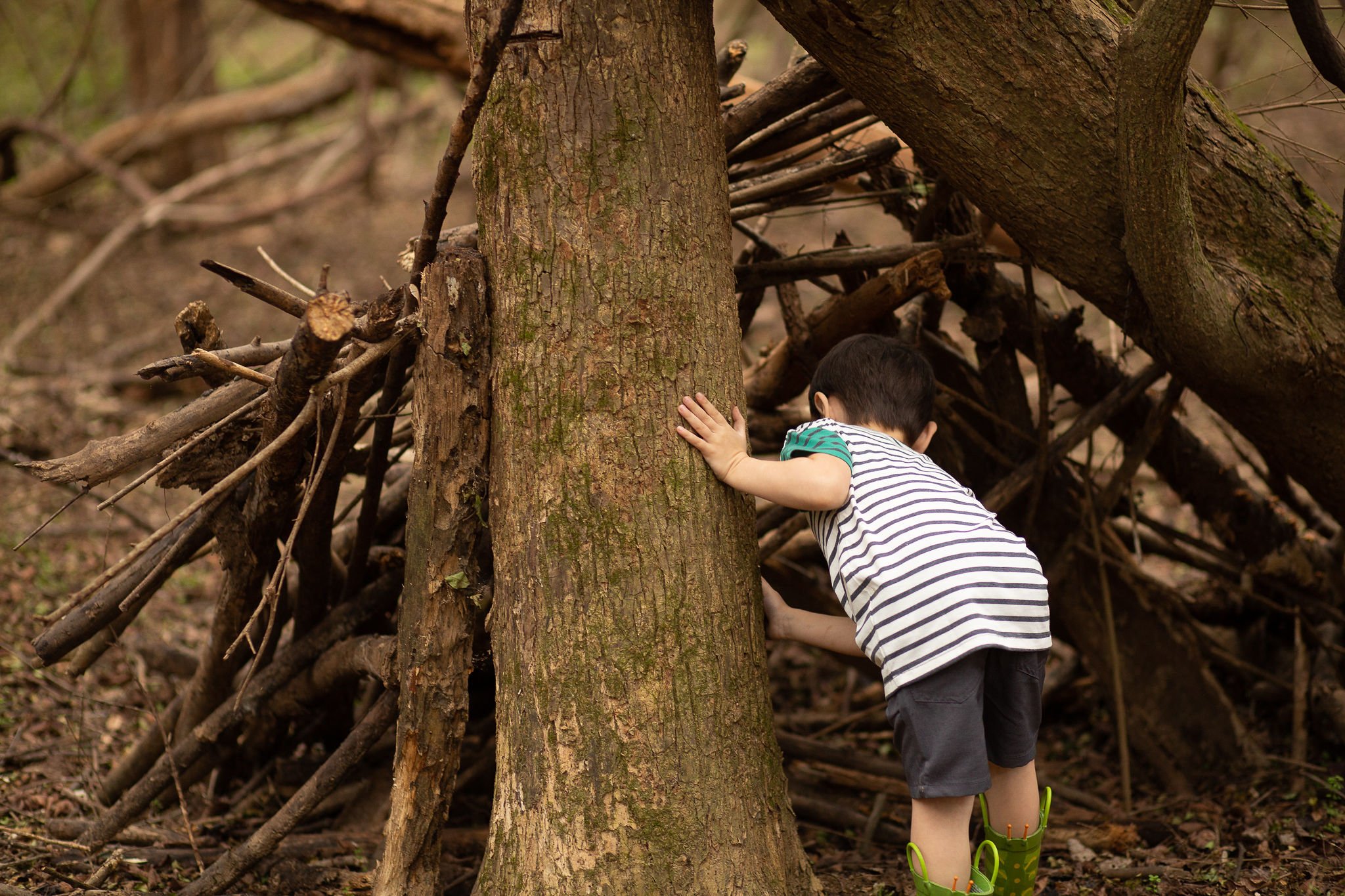Our Methods
The what and why behind our educational setting
Forest Schooling
Forest Schooling took root in the open-air culture of Scandinavia and remains a main educational choice throughout that region, the U.K., and Europe. Forest Schooling offers opportunities for holistic growth through a child-centered inspirational learning process with regular sessions of exploration and supported risk-taking. This type of learner-driven and hands-on experience helps to facilitate knowledge gathering, confidence, self-esteem, and resiliency in a natural, non-judgmental, nurturing setting. Most importantly, it inspires a deep and meaningful connection with the world, its Creator, and how a learner fits within it. Staff at Rooted have completed Level 1 Nature-Based Teacher Certification through the Eastern Region of Forest and Nature Schools (ERAFANS) and have plans to complete all 3 levels in addition to obtaining Forest Schooling certification through the Forest School Association. We invite you to check out ERAFANS and FSA for plenty of information, education, and resources!
Harkness Model
What is the most important thing in a classroom? Besides the children of course - it’s a table! If you want to learn about each other’s day as a family, you sit at the table together to share a meal. Similarly, the table is where learners explore ideas together as a group and develop the courage to speak, the compassion to listen, and the empathy to understand. It is never about being right or wrong and every voice carries equal weight.
In traditional classes, students sit facing the teacher and are discouraged from interrupting the lesson. At Rooted, the table fosters a collaborative approach to problem-solving, and learning is driven by the learner whilst the “teacher” sits in the corner and is discouraged from interrupting the creative learning experience!
Socratic Method
Developed by the Greek philosopher, Socrates, the Socratic Method rests on the idea of a dialogue between teacher and students, consisting of continual probing questions from the teacher, in a concerted effort to explore the underlying beliefs that shape a learner’s views and opinions. In short, critical thinking stems from a shared dialogue that answers every question with another question.
“I cannot teach anybody anything, I can only make them think.” - Socrates
Reggio Emilia Model
Have you ever noticed children possess a hundred languages? If you pay close enough attention, you will notice they have hundred different ways of thinking, expressing, understanding, and encountering the world around them. As we grow older, we are taught to stay inside boxes and think a certain way, causing our various dimensions of experience to fade over time. The extraordinary potential of children, their knowledge-building and creative processes, weave together myriad forms with which knowledge is constructed.
“To make a lovable school, industrious, inventive, livable, documentable and communicable, a place of research, learning, recognition, and reflection, where children, teacher, and families feel well - is our point of arrival.” -Loris Malaguzzi
Neuropsychology
What do change and growth have in common? They both begin within themselves and they rely upon each other. Issues cannot be addressed until they are acknowledged. They cannot be changed until why or what is causing the issue. Only then is the growth seen. In the most simplistic form, this describes the field of Neuropsychology. We look at the root issue causing distress in an area and work with learners to provide solutions for change and growth. Our goal is to see children learn to thrive despite difficulties they may encounter in the world!





